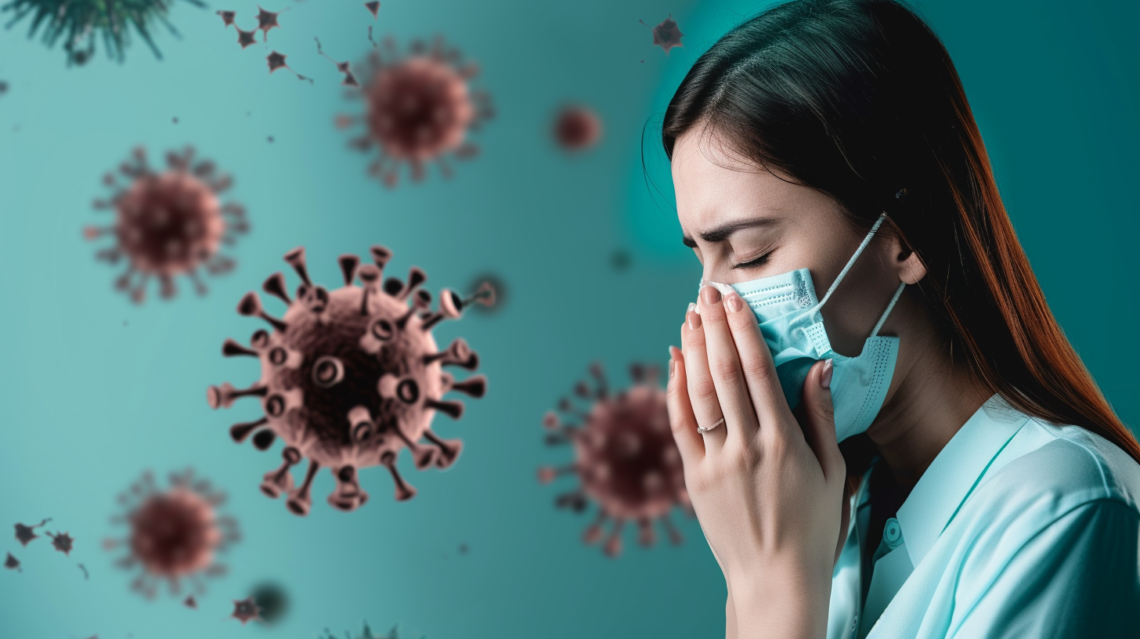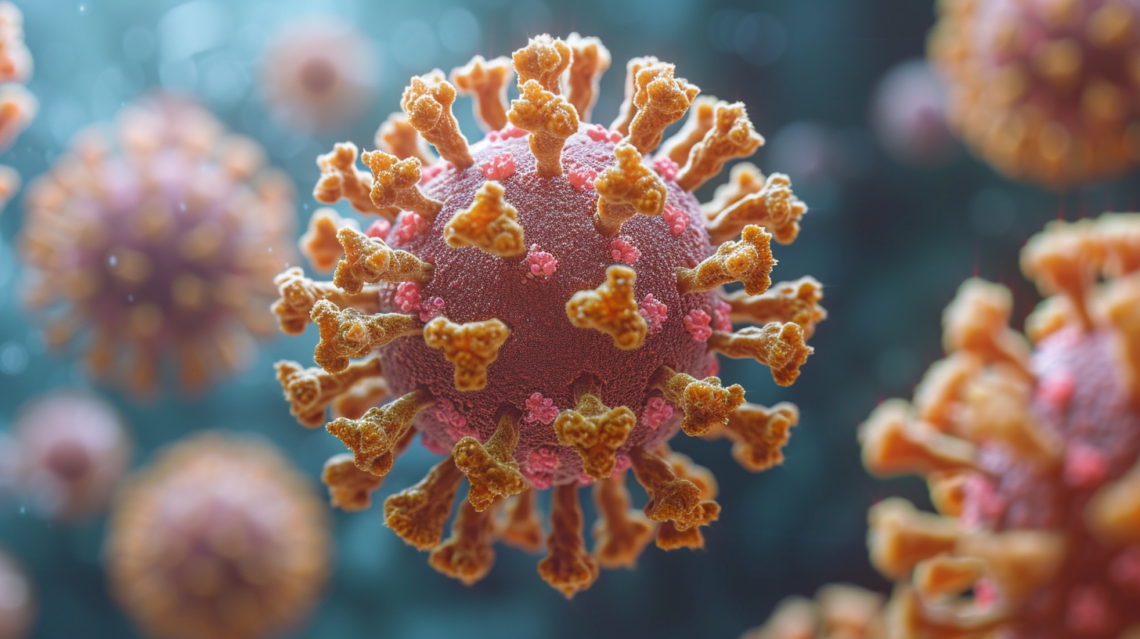COVID-19
-
Chronic Cough After COVID-19
In light of the COVID-19 pandemic, an emerging and perplexing phenomenon that has caught the attention of the medical community worldwide is the persistence of symptoms long after the acute phase of the infection has subsided, a condition often referred to as “long-haul” COVID-19, post-acute sequelae of SARS-CoV-2 infection (PASC), or simply long COVID. Among the constellation of symptoms that have been observed in this condition, one that stands out both for its prevalence and its impact on the quality of life of those affected is a persistent cough, a symptom that, while seemingly mundane, can be a source of significant distress and can also serve as a window into…
-
COVID-19 Spike Protein
As we continue to navigate through the COVID-19 pandemic, it’s crucial to understand the various elements that make this virus particularly formidable. Central to the virus’s ability to infect humans is its spike protein. This structure protrudes from the virus’s surface and is pivotal in how the virus attaches and enters our cells. Imagine a key designed to fit perfectly into a lock – in this case, the spike protein is the key, while the lock is a receptor found on the surface of human cells. This receptor, known as ACE2, is abundant in various organs, including the lungs, heart, and kidneys, making them prime targets for the virus. How…
-
The Risks of Repeated COVID-19 Infections
According to a new report from the World Health Organization (WHO) it has emerged that the actual levels of COVID-19 cases globally could be significantly higher – ranging from 2 to 19 times more than the reported figures. This revelation is based on comprehensive wastewater data analysis. This finding is particularly alarming as it underscores the potential underestimation of the virus’s prevalence, raising questions about the global response and readiness against the pandemic. Adding to the complexities of the pandemic, the WHO is highlighting the largely unknown dangers of repeated COVID-19 infections, which can frequently occur without any symptoms. This aspect of the virus’s behavior is particularly insidious, as it…
-
Long-COVID
Long-COVID, also known as post-acute sequelae of SARS-CoV-2 infection (PASC), is a term used to describe a range of symptoms that continue for weeks or months after the initial infection of COVID-19. This condition does not discriminate; affecting individuals regardless of the severity of their initial infection. It is a multifaceted syndrome, encompassing a wide array of symptoms that can fluctuate and change over time. Symptomatology of Long-COVID The symptom profile of long-COVID is diverse, with patients reporting a plethora of issues that can affect multiple organ systems. The most commonly reported symptoms include: Persistent Fatigue: This is not just a feeling of tiredness; it’s a profound exhaustion that doesn’t…
-
AI: A New Helper in Detecting COVID-19
In the world we live in today, where COVID-19 has been a significant concern, getting the right diagnosis quickly and accurately is crucial. You’ve probably heard of the RT-PCR test – the common method used to diagnose COVID-19. While this test is widely used, it can have its drawbacks. For example, results might take time, and sometimes, it doesn’t catch every case of COVID-19. That’s where a new, smart technology steps in to change the game: Artificial Intelligence (AI). Understanding the New AI Breakthrough When someone has COVID-19, they often show symptoms like coughing or difficulty breathing – but so do other lung infections like pneumonia. This similarity can make…
-
COVID-19-Induced Brain Fog
As the world continues to grapple with the ongoing effects of the COVID-19 pandemic, a common condition has emerged, known colloquially as “brain fog.” Brain fog, in the context of COVID-19, is characterized by a range of cognitive disturbances. These include, but are not limited to, difficulty concentrating, memory lapses, confusion, and an overall lack of mental clarity. Unlike the more acute symptoms of COVID-19, such as fever and cough, brain fog tends to linger, often persisting long after the individual has recovered from the initial viral infection. The Pathophysiology: A Complex Interplay of Factors The exact pathophysiology of COVID-19-related brain fog is still a subject of ongoing research. However,…
-
COVID-19 Considerations for Holiday Gatherings
As we approach another holiday season in the continuing context of COVID-19, we find ourselves balancing the joyful anticipation of festive gatherings with the prudence necessitated by the pandemic. This year, though many COVID-19 restrictions have been lifted and vaccines have made gatherings safer, the reality of the virus and its variants remains a concern for many. It’s a time that calls for sensitivity and adaptability, as we navigate our way through holiday celebrations. The pandemic has affected everyone differently, shaping individual comfort levels and responses to social gatherings. While some of us eagerly anticipate returning to large family gatherings and public celebrations, others remain cautious, preferring smaller, more intimate…
-
Flu and COVID-19 Vaccines During Pregnancy
Pregnancy is a time of profound transformation and anticipation. However, it also brings a heightened sense of vulnerability to infections, particularly during the respiratory illness season. In this comprehensive article, we’ll explore the significance of flu and updated COVID-19 vaccines for pregnant individuals, addressing safety, efficacy, and the role these vaccines play in preventing serious complications. Understanding the Risks During Pregnancy Pregnancy naturally alters a woman’s immune system, heart, and lungs. These changes, while crucial for the development of the fetus, can make expectant mothers more susceptible to severe illnesses from respiratory viruses. Notably, illnesses like influenza (flu) and COVID-19 pose a substantial risk during pregnancy. The Flu and Pregnancy…
-
Preparing for the Fall Respiratory Season
As the leaves change and the temperatures drop, British Columbia is bracing for the annual respiratory season. But unlike the typical cold and flu seasons of the past, the ongoing threat of COVID-19 adds a layer of complexity to our preparation and response. It’s essential to be informed and proactive to ensure a safer and healthier autumn. Why Fall is Different With the onset of the colder months, respiratory illnesses, including the common cold, flu, and now COVID-19, tend to become more prevalent. As people retreat indoors to stay warm, the likelihood of transmission increases due to close proximity and reduced ventilation. The convergence of these illnesses can strain our…
-
Living with Long-COVID
As the COVID-19 pandemic continues to evolve, many individuals are experiencing lingering and prolonged symptoms long after their initial infection has cleared. This phenomenon, known as “long-COVID,” or “post-acute sequelae of SARS-CoV-2 infection” (PASC), has been garnering increased attention from researchers and healthcare professionals alike. Long-COVID is a condition where individuals experience a wide range of symptoms that last for weeks or even months after recovering from the acute phase of COVID-19. While the exact causes of long-COVID are not yet fully understood, it is believed to be the result of the body’s immune response to the virus, persistent inflammation, or the virus itself causing ongoing damage to the body.…








